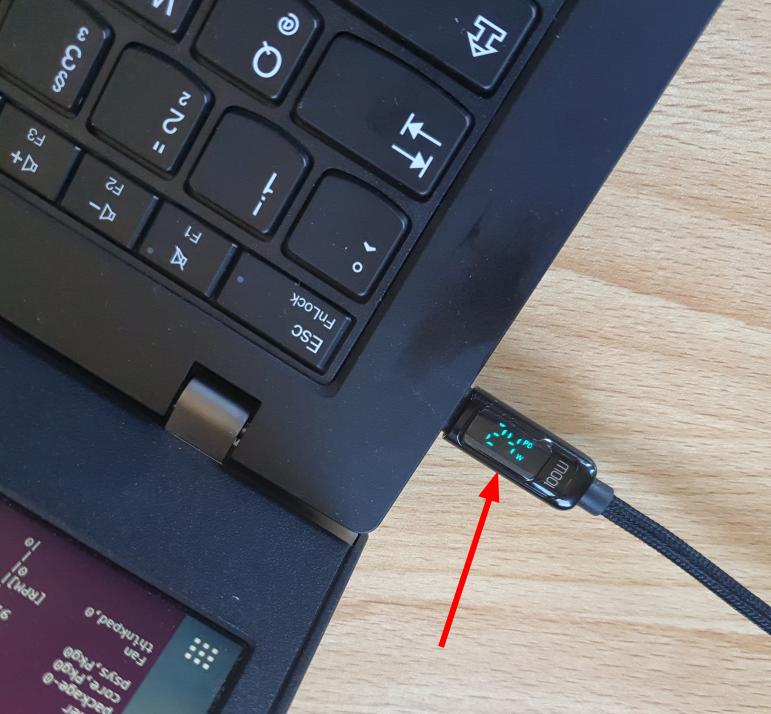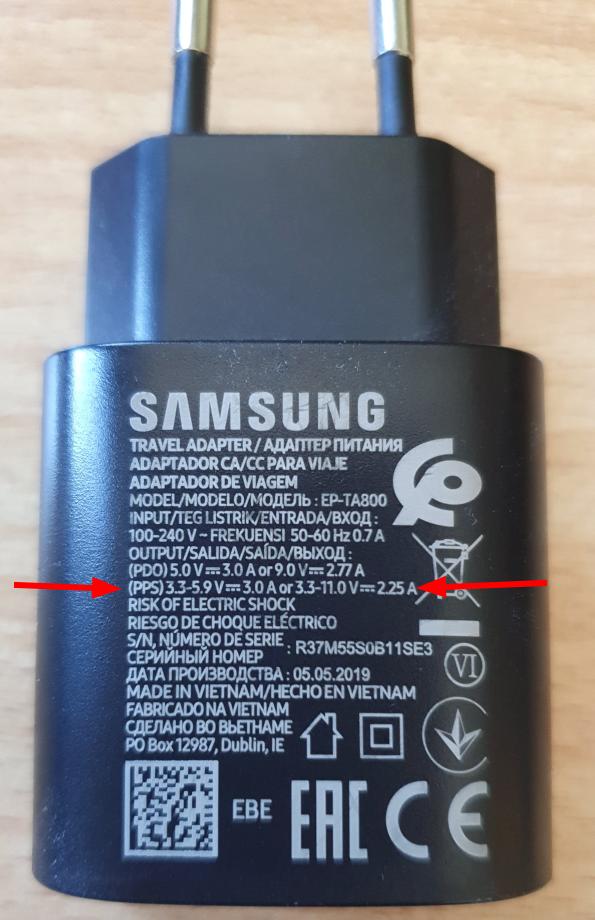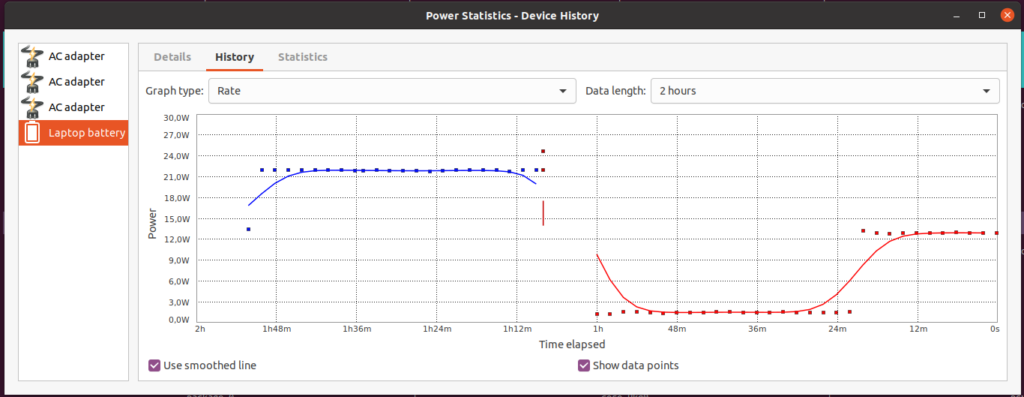
Back in November 2021, I wrote a post on how current Power Delivery (PD) capable notebook chargers with a USB-C connector can be used to charge pretty much all other devices that are charged over USB. This is because USB PD is backwards compatible and also delivers power to devices that use USB power for charging. A couple of days ago I noticed that the reverse is also possible: Small and very lightweight USB PD capable chargers delivered with high end smartphones these days can also charge my notebook!

The picture on the left is from a USB power delivery capable charger of my smartphone. It’s rated at 25 watts and a maximum voltage of 11 volts, so I was a bit skeptical at first if it would charge my notebook. After all, my normal notebook charger delivers up to 20 volts and 65 watts.
On the small charger, support for ‘PPS’ is indicated, which stands for ‘Programmable Power Supply’, an optional extension introduced with version 3 of the USB Power Delivery specification. This extension allows the charger and the charged device to agree on any voltage instead of one of the fixed levels defined in previous versions of the standard.
So I gave it a try and used a USB PD cable with a display that shows the charging rate to see what would happen. And indeed, the notebook and the charger recognize each other and the notebook draws the advertised 25 watts from the power supply, no more, no less. Under normal conditions, the notebook draws around 8-10 watts, so the charger is more than capable to drive the notebook and even charges the battery at the same time. Not very fast, and it takes forever to charge the battery while working with the notebook, but it works just fine. I then ran s-tui and a stress test for half an hour to see how things look like under maximum load. 25 watts are just around what the notebook draws in these conditions and the charger was almost capable of absorbing the load. Not quite, however, I noticed that some power started to come from the battery which started to drain at a rate of about 3% an hour. Not a very likely scenario during my daily work, however.

The picture above shows how the battery is used and recharged in a number of scenarios. The blue line at the beginning is a discharge rate of 21 watts under full load with the stress test utility and no charger connected. After half an hour I connected the 25 watts charger and the notebook then assumes that it takes the full load of the stress test and additionally charges the battery with one or two watts. But that is not quite the case, as I said above, the battery is slightly discharged. I then stopped the stress test and the charger could then recharge the battery at a rate of around 12 watts, while the rest was used to power the running notebook.
O.k. so why would I use a 25 watt charger with my notebook? Well, in cases where I’m mobile all day and want to put as little weight into my backpack, this charger comes in very handy, as it weighs next to nothing compared to a full 65 watt charger!